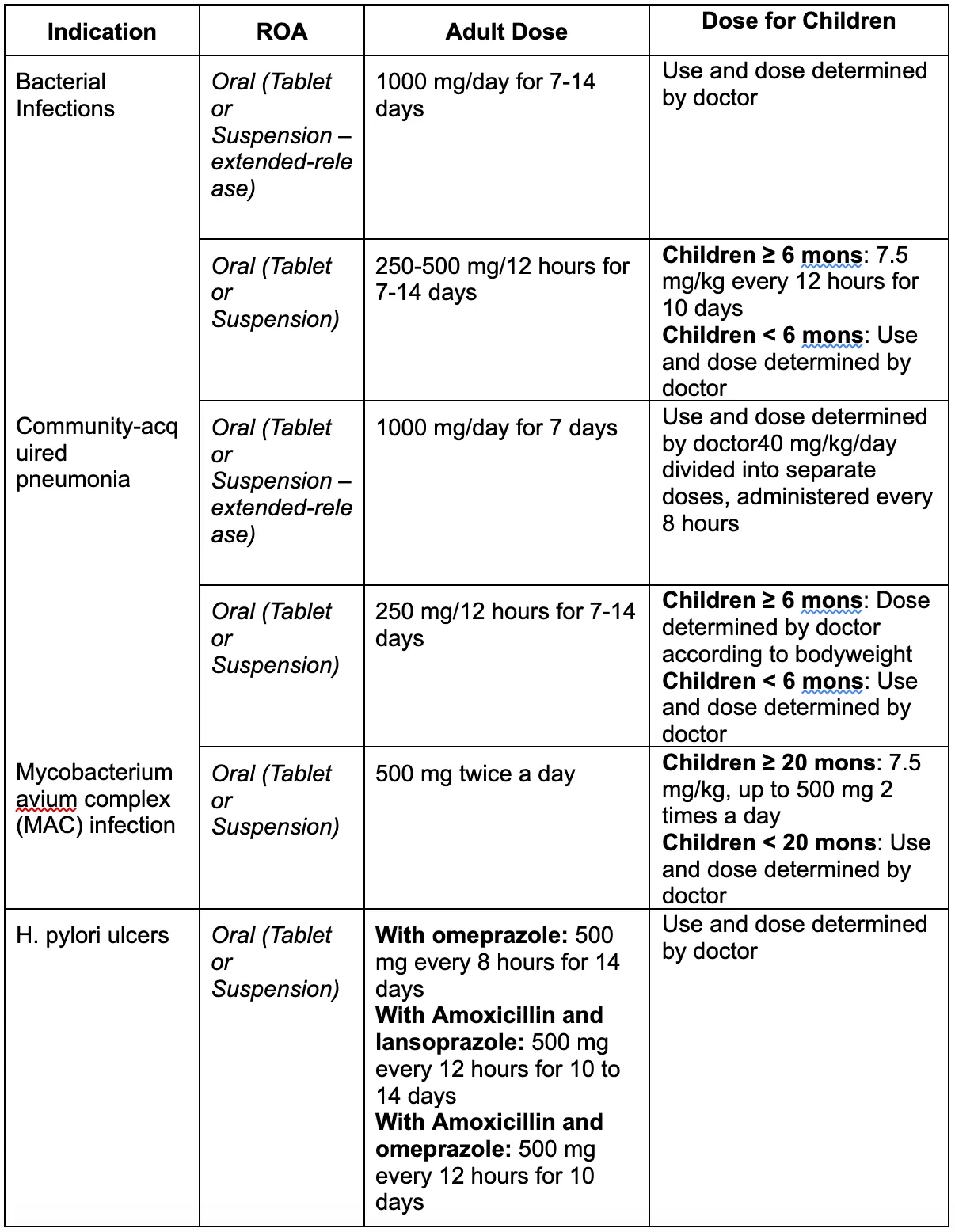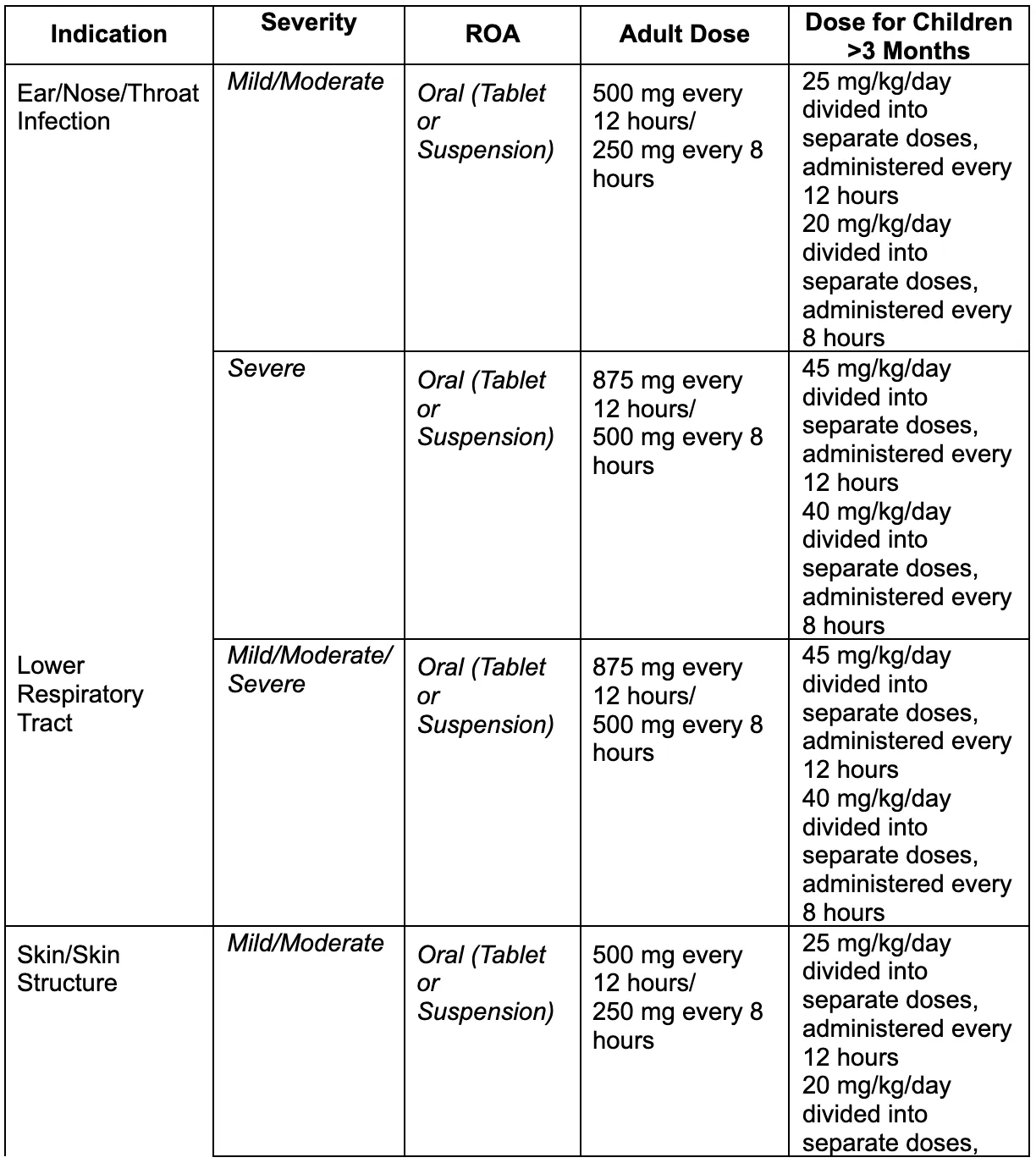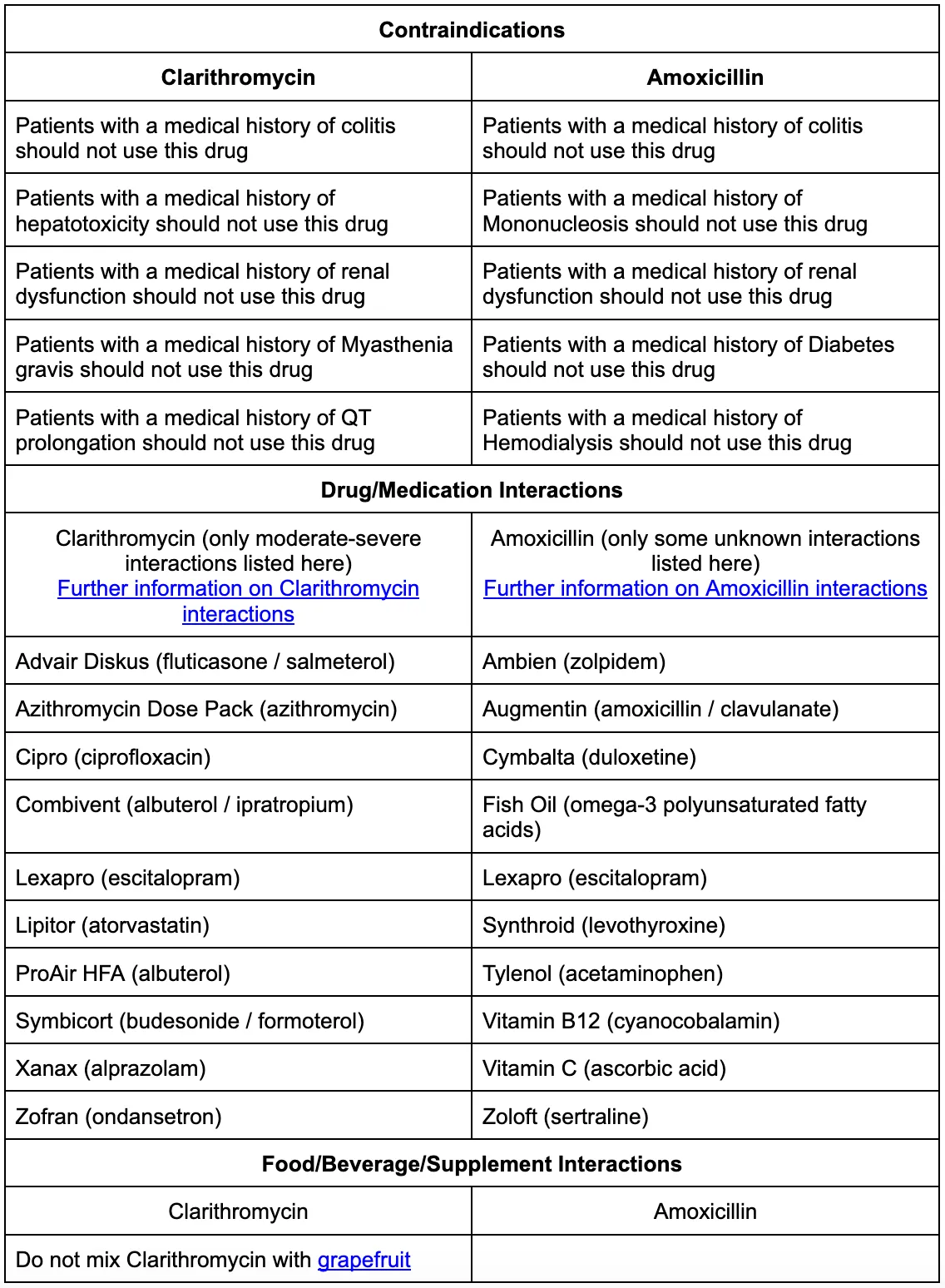Your session is about to expire
Clarithromycin vs Amoxicillin
Introduction
Both Clarithromycin and Amoxicillin may perform the same functions and treat similar kinds of infections. However, subtle differences lead to a variation in the usage of the drugs by both doctors and patients. While Clarithromycin may be preferred by some doctors, Amoxicillin might work better with other patients. The results and effectiveness of the drug also depend on patient anatomy, medical history, and interactions with other drugs.
While Clarithromycin is a macrolide antibiotic belonging to the same class as erythromycin, Amoxicillin is a penicillin-class antibiotic derived from ampicillin. Another key difference between the two antibiotics can be found in how they work. The former works on inhibiting bacterial protein synthesis, whereas the latter achieves the same effects by inhibiting bacterial cell wall synthesis.
Since Clarithromycin is highly effective in binding to the 50S subunit of the bacterial ribosome, subsequently acting as a shield against the formation of new proteins promoting bacterial growth, it is usually an ideal treatment plan against respiratory tract infections, sinusitis, soft tissue infection, skin infections, and other atypical infections. It has also proved useful in treating peptic ulcers caused by Helicobacter pylori.
Contrarily, in the case of Amoxicillin, its interference with the transpeptidase enzyme works in its favor. This activity allows the drug to inhibit the cross-linking of peptidoglycan chains in the bacterial cell wall, ultimately killing bacterial cells. The use of Amoxicillin against gram-positive bacteria, respiratory tract infections, community-acquired pneumonia, and many other bacterial infections has been proven to be effective over time. Both Amoxicillin and Clarithromycin can prove useful for patients looking to treat different kinds of bacterial infections. However, the usage should align with the doctor’s recommendations, as certain drugs may pose harm when they interact with other drugs or a patient’s anatomy.
About Clarithromycin and Amoxicillin
What is Clarithromycin?
First invented in 1980 by a group of researchers at Taisho Pharmaceutical in Japan, Clarithromycin was a product of efforts to reduce the gastrointestinal side effects of erythromycin. Clarithromycin might have been a coincidental discovery, but the final product achieved many of the same benefits without causing severe nausea and stomachaches. This was something researchers had been attempting to achieve for years.
Once Clarithromycin was introduced to the market, clinical trials emerged that vouched for its effectiveness in combination which several other drugs, one of which was Amoxicillin. Clarithromycin proved especially useful for certain stomach ulcers and multiple bacterial infections. It is a macrolide antibiotic that works at halting the growth of bacteria. Thus, it works specifically for bacterial infections and cannot be used to treat viral infections. Speaking to a medical professional before using any medication is recommended, as improper or unnecessary usage may lead to dangerous side effects.
What Conditions Is Clarithromycin Approved To Treat?
Clarithromycin is approved for the treatment of different kinds of illnesses, which include the following;
- Community-acquired pneumonia
- Bronchitis
- Ear, nose, and throat infections
- Skin infections
- Mycobacterium avium complex (MAC) infection
- H. pylori ulcers
How Does Clarithromycin Work for a Bacterial Infection?
Clarithromycin is an antibiotic that is highly effective in treating bacterial infections. Belonging to the macrolide class of drugs, this antibiotic is particularly useful for inhibiting the growth and spread of bacteria that could lead to infections in different parts of the body. Clarithromycin can effectively diminish the spread of the illness by inhibiting and/or killing bacteria through bacterial protein synthesis.
Clarithromycin achieves this effect by binding to the 50S subunit of the bacterial ribosome (this is where protein synthesis occurs). This binding effectively halts the process of the addition of new amino acids to the protein chain resulting in lower bacterial protein synthesis and, consequently, the death of bacteria. As the bacterial growth halts or is slowed down, the immune system can pick up speed and begin clearing the body of the infection.
More importantly, since Clarithromycin affects gram-positive and gram-negative bacteria, it can treat a wider range of illnesses. However, specific effects depend on unique strains, so you must speak to a professional before following any treatment plan. Moreover, it is vital to follow the full course of treatment to prevent developing resistance to the antibiotic.
What is Amoxicillin
Unlike Clarithromycin, Amoxicillin is a penicillin antibiotic. First discovered in 1958, Amoxicillin emerged through further research on ampicillin. Ampicillin, which was a drug discovered by researchers at the time, had recently become popular due to its effectiveness in treating Gram-positive and Gram-negative infections. A desire to improve the effects of ampicillin led to Amoxicillin.
Today, Amoxicillin is one of the most commonly prescribed medications for treating bacterial infections in children. Since it has been derived through intensive research on ampicillin, it far outperforms many other drugs in the market. For Amoxicillin, the primary difference emerges in the existence of an additional hydroxyl group on its benzene ring. Since it is more lipid soluble than ampicillin, it is proven to kill bacteria faster. Moreover, Amoxicillin can also be combined with Clarithromycin to treat ulcers caused by H. pylori.
What Conditions Is Amoxicillin Approved to Treat?
Amoxicillin is approved to treat the following conditions;
- Infection of the ears, nose, and throat
- Infection in the urinary tract
- Skin infections
- Community pneumonia
- Tonsillitis
- Bronchitis
- H. pylori (in combination with other drugs)
How Does Amoxicillin Work for a Bacterial Infection?
Subtle differences between different antibiotics may significantly increase or decrease their efficacy. It can also impact the time taken for a bacterial infection to be reduced or eliminated from the system. The same is true for Amoxicillin.
Amoxicillin is an antibiotic that works at eliminating bacteria by synthesizing cell wall mucopeptides and eventually weakening that structure which leads to bacterial death. Belonging to the family of penicillins, Amoxicillin works in a similar way to ampicillin, with clinical trials revealing much more efficacy for Amoxicillin.
Effectiveness
How Effective Are Clarithromycin and Amoxicillin for Treating a Bacterial Infection?
A clinical study published in 1993 on the treatment of acute maxillary sinusitis recorded a clinical trial success (cured or improved bacterial infection) for 128 out of 132 patients taking Clarithromycin and 119 out of 128 patients taking amoxicillin/clavulanate. There was also a significant improvement in signs and symptoms recorded between the two clinical trial groups. While Clarithromycin was effective in 97% of participants, Amoxicillin was a close second at a 93% success rate. It was concluded that Clarithromycin was just as effective as Amoxicillin. However, subtle differences could be noted, such as fewer gastrointestinal side effects in the case of Clarithromycin.
Another study on the effectiveness of Amoxicillin and Clarithromycin in 1996 showed that of the 221 patients receiving Amoxicillin and the 221 receiving clarithromycin, only 20% of amoxicillin users and 25% of clarithromycin users needed to visit the general practitioner again in four weeks. Moreover, it took Amoxicillin users 6 days and clarithromycin users 5 days to return back to normal activity after taking the medication. Results were similar for both antibiotics. However, yet again, the macrolide antibiotic had fewer gastrointestinal side effects, proving it more effective for patients with gastrointestinal issues. This was the only notable difference.
Both Clarithromycin and Amoxicillin have proved to be useful in treating bacterial infections over time. However, one can outperform the other depending on the type of infection. Treatment plans that carefully evaluate the patient’s history can produce solutions that cater to unique infections. The type of infection, the bacteria strain, and a patient’s medical history can give the doctor more information on the treatment, which would be more effective for the patient. Moreover, combination therapy has also proved to be effective in some cases.
Dosage information
How is Clarithromycin Administered for a Bacterial Infection?
Clarithromycin Dosage Information
Oral dosages of Clarithromycin depend on the bacterial infection and a patient’s medical history. Clarithromycin can be administered orally in tablet or suspension form. The following table discusses average doses in detail. However, certain health conditions and drugs may interfere with certain doses of Clarithromycin. It is recommended you visit your doctor and inform them of any medications you may already be using and your medical history to avoid serious side effects.

How is Amoxicillin Administered for a Bacterial Infection?
Amoxicillin dosage information
Amoxicillin is generally used to treat bacterial infections of different kinds, including ear, nose, and throat infections, respiratory tract infections, skin infections, and genital infections. However, dosages may differ depending on the patient’s age, medical history, and any medication they may already be taking. It is important to request your doctor for an altered dosage if you are suffering from a condition that can worsen with the usage of Amoxicillin. The following table provides average dosages that may differ depending on your doctor’s recommendations;


Side Effects
The following list is not an exhaustive one. It may not contain all possible side effects of the medication. However, some of the common side effects have been listed for your knowledge. If you experience any side effects mentioned below, it is recommended you visit your doctor immediately for an evaluation.
What Are the Most-Common Side Effects of Clarithromycin?
The most common side effects include;
- Diarrhea
- Excessive vomiting or nausea
- Stomach pain
- Heartburn
- Gas
- Headaches
- A change in taste
Are There Any Potential Serious Side Effects of Clarithromycin?
* If you experience any of these serious side effects, seek medical help immediately
Clarithromycin may interact with a drug or disease, affecting a patient more severely than others. Here are signs to look out for;
- Rashes, hives, itching, or peeling and blistering skin
- Pain in the chest, difficulty breathing, pain in the side of the body, or a slurred speech
- An upset stomach or dark stools that do not go away after two months of treatment
- Swelling on the body, especially the ankles, lower legs, feet, hands, face, tongue, lips, and eyes
- Fever
- Yellowing of skin or eyes
- Fatigue
- Unexplained bleeding and bruising
- Lack of appetite
- Dark urine
- Heartbeat irregularities
What Are the Most-Common Side Effects of Amoxicillin?
Some common side effects include;
- Vomiting or nausea
- Diarrhea
- Changes in taste
- Headaches
Are There Any Potentially Serious Side Effects of Amoxicillin?
* If you experience any of these serious side effects, seek medical help immediately
Amoxicillin may cause serious side effects, including;
- Rashes or blistering of the skin
- Hives
- Wheezing
- Difficulty breathing or swallowing
- Swelling of face, lips, eyes, throat
- Diarrhea up to two months after treatment
Contraindications and Interactions
Warnings and general precautions for Clarithromycin and Amoxicillin
Look out for the warning signs of hepatitis (lack of appetite, dark urine, stomach pain, and yellowing of skin and eyes). This can indicate serious side effects which require you to discontinue usage. You must also skim the information on the packet and avoid taking the drug if you are allergic to the ingredients or have a general allergy to macrolide antibiotics.
Moreover, Clarithromycin may interact badly with other medications, including blood thinners, antiarrhythmics, and antifungals. It can also worsen a patient’s liver if they already have a history of liver problems.
In some cases, Clarithromycin has also been shown to worsen the symptoms of Myasthenia Gravis. Furthermore, patients with a history of cardiovascular abnormalities should avoid Clarithromycin. Patients are also recommended to avoid taking this medicine while pregnant or breastfeeding.
Much of the same rules and interactions apply in the case of Amoxicillin. However, small differences do exist. Avoid using Amoxicillin if you have a history of allergic reactions to penicillin, Amoxicillin, or other beta-lactam antibiotics. Amoxicillin can also react badly to oral contraceptives and anticoagulants. Moreover, patients with infectious Mononucleosis should avoid taking this medication.
This list is far from exhaustive, and it is always recommended to speak to your doctor before following any treatment plan.
Contraindications and important interactions for Clarithromycin and Amoxicillin

Cost Comparison
How much do Clarithromycin and Amoxicillin cost?
Clarithromycin is usually sold in packets containing 30 tablets, each providing a 500 mg dosage with a cost of $1.97 per unit. Each packet costs $59.04. The cost of using Clarithromycin may vary from individual to individual and depend on their unique requirements. However, for an adult using 500 mg twice daily (one every 12 hours) for 14 days, the cost may be approximately $55.16 for the entire course.
On the other hand, Amoxicillin is sold in packets containing four capsules, each providing a 500 mg dosage, with a cost of $2.48 per unit. Each packet costs $9.93. The cost of using Amoxicillin may differ depending on patient requirements, but for an adult taking 500 mg twice a day (once every 12 hours) for 14 days, the cost may amount to approximately $69.44 per tablet, which makes it more expensive in comparison with Clarithromycin.
The Popularity of Clarithromycin and Amoxicillin
In the case of Amoxicillin, the ranking far outperforms Clarithromycin. Amoxicillin is ranked number 40 in the top drug rank for the United States, with an estimated 15,922,907 prescriptions provided in 2020 and 12,780,652 patients using the medicine. Clarithromycin ranks at number 397, with 274,950 prescriptions provided in 2020 and 211,419 patients using the medicine.
This may be surprising considering the fact that Amoxicillin may be a bit more costly than Clarithromycin. However, clinical trials that exist to support Amoxicillin far outperform Clarithromycin, which adds to its credibility. This may be why it is popular amongst patients suffering from bacterial infections.
Conclusion
Takeaway
It is important to recognize the benefits of Clarithromycin and Amoxicillin for patients diagnosed with bacterial infections. These common antibiotics have distinct characteristics that allow doctors to treat unique infections and diseases containing Gram-negative and Gram-positive bacteria. However, it is essential to note the differences between the two.
Clarithromycin works by inhibiting bacterial protein synthesis by binding to the ribosomes, while Amoxicillin inhibits the synthesis of the bacterial cell walls. This makes both antibiotics unique and specifically useful for different diseases. However, they can often be used in combination to treat illnesses containing stronger bacteria.
Clinical studies vouch for the safety and efficacy of both Amoxicillin and Clarithromycin. However, side effects do exist, which highlights the importance of evaluating a patient’s medical history before administering a drug. When administered to a patient with gastrointestinal disease or liver abnormalities, the drug may worsen the conditions. Moreover, Amoxicillin may lead to severe allergic reactions for patients who are allergic to penicillin, as both drugs have common characteristics.
Despite the potential side effects, Clarithromycin and Amoxicillin are powerful and potent antibiotics that can treat unique bacterial infections which may not respond to other medications. Developing an understanding of their interactions, how they work, and any potential side effects can lead to better treatment plans and more effective outcomes. This can also lead to further trials and research which may eliminate some of the gastrointestinal side effects related to the drugs.